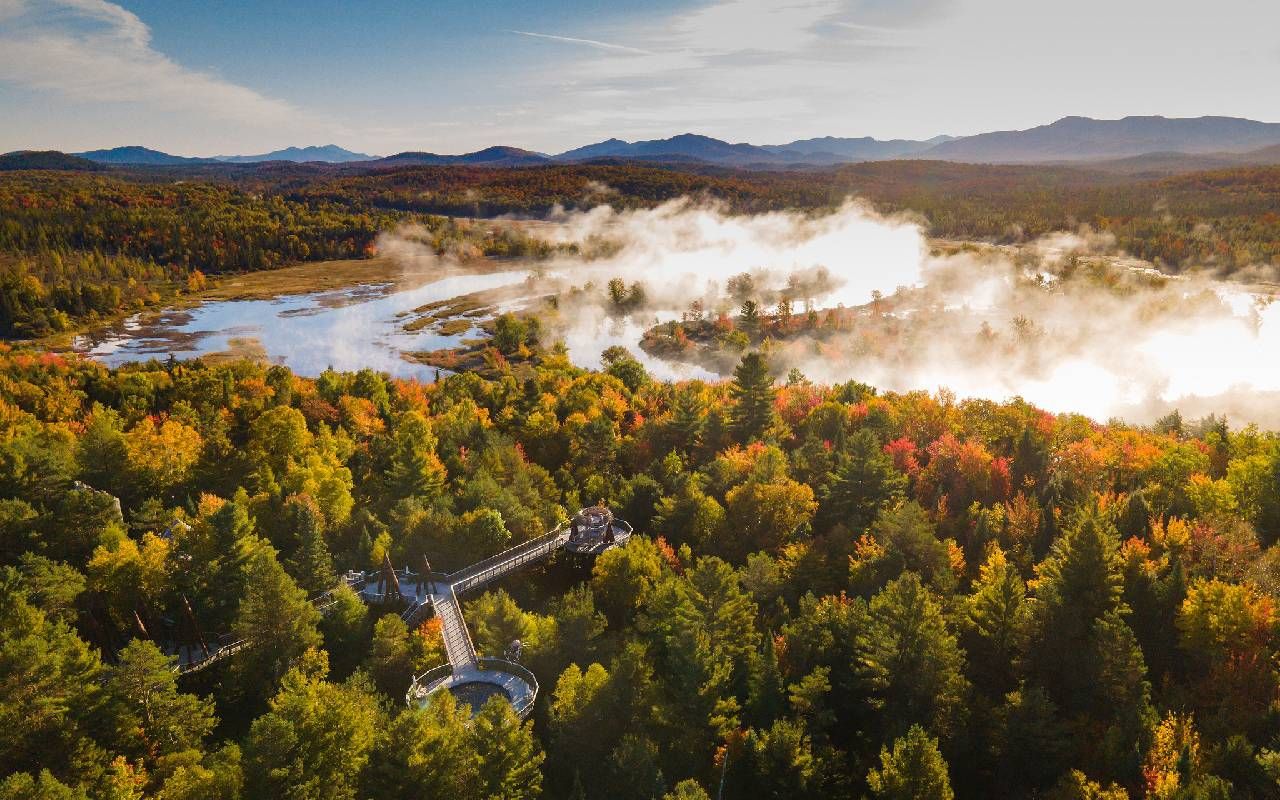Bird Enthusiasts, Start Planning for the April 2024 Solar Eclipse
The 2024 solar eclipse is coinciding with the spring migration, so flock to these spots for prime bird watching
The North American Solar Eclipse will take place in the afternoon of April 8, 2024. But it's not all about the sun and moon — wildlife will react to the celestial event, especially birds. And since the eclipse will take place in April, it coincides with prime time for spring migration.

The eclipse's duration of totality will be up to four minutes and 27 seconds, almost double that of the Great American Eclipse of August 21, 2017. There are many states that lie in the path of totality from Texas up through Maine — including major forests, parks, wildlife refuges and nature preserves.
Birds in the path of totality have been reported to react in many ways, depending on the species. Most strikingly, nighttime behavior is sometimes triggered.
You don't have to wing it — here are some spots where bird lovers can experience the beauty of the eclipse along with the birds in the path of totality.
Tip: Be an early bird and plan now — the eclipse is anticipated to be a massive travel event.
How Do Birds React?
Birds in the path of totality have been reported to react in many ways, depending on the species. Most strikingly, nighttime behavior is sometimes triggered. And for migratory birds, their flight altitudes can shift significantly — they'll fly closer to the ground — or even land. And many species will become suddenly quiet, although birds that typically migrate at night very likely start out for their night migration. Nocturnal birds may also emerge as if it is nighttime.
During the August 2107 eclipse, researchers from the Cornell Lab of Ornithology and the University of Oxford studied radar to observe the behavior of birds (and insects) and published their findings in Biology Letters. They used data from 143 weather radar sites in the continental U.S.
The report's findings included information from eight sites that were within the path of totality where there was complete darkness for a few minutes. At these locations, researchers observed a sudden burst of activity during the moments of totality, such as birds "flushing into the air as a reaction to the sudden darkness."
Southernmost Illinois
The Cache River State Natural Area, specifically The Cache River Wetlands, is a Ramsar site —a wetland site designated to be of international importance under the Ramsar Convention. The Cache River Wetlands include three National Natural Landmarks and are home to some of the oldest living trees east of the Mississippi River.

Southern Illinois is at the apex of the area of longest duration for viewing the eclipse, which will occur at 12:42 pm on the Cache River.
"The eclipse will be a perfect time for birding in Southernmost Illinois — spring migration and foliage not fully out," says Carol Hoffman, Shawnee Forest Country Southernmost Illinois Tourism Bureau. "The area shelters 113 state threatened or endangered species and seven federally threatened or endangered species."
More than 250 species of birds are in the Cache River Watershed, including black vultures, bald eagles, pileated woodpeckers, the state-endangered barn owl, snowy egrets, yellow and black-crowned egrets, yellow and black-crowned night herons, great and little blue herons, red-tailed hawks, hooded mergansers and wood ducks.
"Seasonal migrations bring multitudes of waterfowl and shore birds to the area, as well as the occasional osprey, golden eagle and black tern," says Hoffman. "Songbirds are abundant, and over 30 species of warblers can be spotted here, including those with southern affinities such as the yellow-throated, hooded, prairie and prothonotary warblers."
Ohio will be in direct line with the 2024 eclipse, and Dublin is located in the far northwest corner of Franklin County, which is home to 341 species of birds.
Heron Pond, Little Black Slough, Marshall Ridge, Bellrose Overlook, Buttonland Swamp and Eagle Pond (accessible by boat), are ideal spots to witness the eclipse, says Hoffman. And Cache Bayou Outfitters will offer a 4.5 mile eclipse canoe excursion in the wetlands to spy warblers, great blue herons, ospreys, cormorants, egrets, kingfishers and eagles. Expect a presentation from professional naturalist guides, and stories shared pertaining to beliefs and customs surrounding solar and lunar events; sandwiches are included.
Dublin, Ohio
Ohio will be in direct line with the 2024 eclipse, and Dublin is located in the far northwest corner of Franklin County, which is home to 341 species of birds.
One of Dublin's best birding sites is Kiwanis Riverway Park here, home to 120-plus bird species, including many Neotropical migrants and warbler species, osprey and eagles. The M.L. Red Trabue Nature Reserve is also a Dublin birding spot to check out; home to 117 species, nest boxes around the perimeter of Karrer Pond attract tree swallows and the ponds and marshes are home to a variety of waterfowl. Woodpeckers and cavity-nesting species can often be seen and heard and raptors and vultures can be spotted flying.
Austin, Texas
The Austin area is home to a handful of LCRA parks located in the eclipse's path of totality.
Black Rock Park is located northwest of Austin along Lake Buchanan in Buchanan Dam. Eclipse enthusiasts and bird watchers can catch a glimpse of little blue herons out on the banks of the lake or a great horned owl up in the trees when the sky darkens. White pelicans, red-tailed hawks and black vultures are also often sighted here. There are campsites in the park and kayak rentals, too, to experience the eclipse out on the water.
Most of the Adirondack region will lie in the path of totality.
About 55 miles northwest of Austin, Shaffer Bend Recreation Area is where you'll find a secluded Texas Hill Country getaway in the town of Marble Falls. Bird lovers can spot smaller bird species like the lark sparrow, black-chinned hummingbird and Eurasian collared-dove here.
There are also outdoor and water activities including kayaking, fishing, horseback riding, mountain biking, hiking and swimming. Visitors can pitch a tent at one of the 20-plus camping sites or hike up in Amani, the newest luxury glamping option at LCRA parks; the safari-style tent provides air conditioning, a kitchenette and a private restroom with a shower.
Note: Black Rock Park is completely booked for the April 2024 eclipse (but you never know) and there is limited availability at Shaffer Bend.
Kentucky
The John James Audubon State Park in Henderson has the best of both worlds — it lies in the path of totality with perfect vantage points for world class birding and hiking.
The park features a necklace of trails to spy woodpeckers, warblers and waterfowl, and the Recreation Lake shoreline offers edge space for fishing species like great blue heron, green heron and belted kingfishers. There are also many bluebird nest boxes for Eastern bluebirds, Carolina wrens, Carolina chickadees, and occasionally tree swallows and prothonotary warblers; in spring and summer, these nesting boxes are busy with courtship and nesting activities.
New York
Most of the Adirondack region will lie in the path of totality. For birding, the Wild Center will be free to the public and host activities and programs including how the sun affects animal and bird life, circadian rhythms and yearly behavior.
Here you'll find an eclipse countdown clock, frequently asked questions and information about events throughout the region.
Indiana
The solar eclipse will sweep across southern Indiana from the southwest to the north. Every part of the state will experience either 100% totality or 90% totality. Depending on your location in Indiana, the partial eclipse will begin shortly after 1:30 p.m. ET with the total eclipse occurring around 3 p.m. ET.
Indiana is a prime migratory zone, lying within the Mississippi Flyway — birds fly back and forth between the Far Northern Arctic, passing through Central America, to arrive in Argentina.
As such, Indiana's lakefront experiences staggering spring migratory congregations — the birds take refuge to rest and prepare for the flight over Lake Michigan. And, in spring, many bird species return to Indiana to find mates and raise their young before returning to their wintering grounds farther south.


